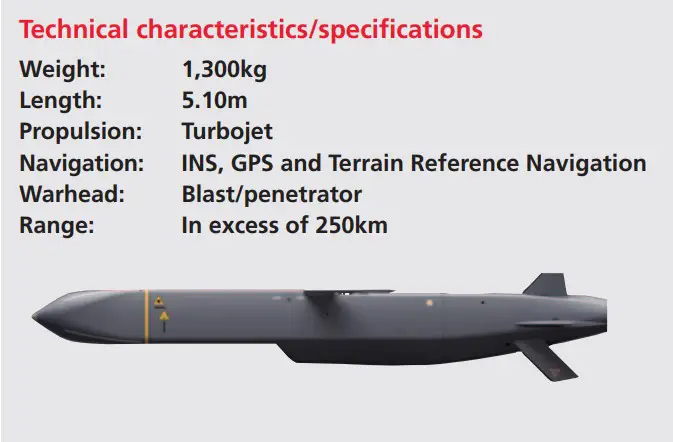As per the request of Ukraine, the United Kingdom has affirmed that it will provide long-range missiles to support Ukraine in its battle against the Russian forces.
According to the manufacturer, the Storm Shadow cruise missile is capable of reaching distances exceeding 250km (155 miles), whereas the US-supplied Himars missiles that Ukraine has access to can only travel about 80 km (50 miles) at most.
The UK’s decision to provide Ukraine with the Storm Shadow missiles is intended to provide them with the best chance of self-defense, according to UK Defence Secretary Ben Wallace.
The missiles can be launched from aircraft, which means that Ukrainian pilots will be able to remain farther away from the conflict zones due to their longer range.
Once released, the Storm Shadow missile descends to low altitudes to prevent detection by enemy radar and subsequently utilizes an infra-red seeker to locate its target.
During a session of the House of Commons, UK Defence Secretary Mr Wallace declared that the UK would supply Ukraine with more weapons following its repeated appeals to the West for support.
Mr Wallace emphasized that the missiles would empower Ukraine to resist the Russian forces encroaching on their sovereign territory. He attributed the UK’s decision to Russia’s alarming conduct, which has involved attacking civilian infrastructure within Ukraine.
Mr Wallace also stated that he had contacted Russian Defence Minister Sergei Shoigu in December, warning him that the UK would provide Ukraine with more potent weapons if Russia continued its offensive activities.
According to Mr Wallace, the missiles are either currently in Ukraine’s possession or en route to the country, and their provision was a proportionate response to Russia’s recent aggressive actions. He stated that Russia’s invasion of Ukraine made this move necessary.
The Defence Secretary also stated that the Storm Shadow missiles were compatible with Ukraine’s existing Soviet-era aircraft, and commended the technicians and scientists responsible for making this possible.

However, he cautioned that the missiles’ range was inferior to those of Russia’s own missile systems, with some of Moscow’s weapons capable of travelling much further.
In a previous statement, Ukrainian Defence Minister Oleksii Reznikov stated that longer-range missiles would not be utilized to attack targets within Russia’s borders.
Ukrainian President Volodymyr Zelensky stated that his country requires additional time before launching a counteroffensive, allowing for more Western military aid to arrive in the nation.
Zelensky expressed in an interview with European public service broadcasters published on Thursday that, with the aid currently available, Ukraine could progress and triumph, but doing so would result in significant losses.
He stated that this outcome was unacceptable and, as a result, more time was required. Ukraine is still anticipating the arrival of various supplies, including armored vehicles such as tanks, which Zelensky stated were arriving in groups.
At an EU meeting, he asserted that if Ukraine were capable of striking targets up to 300 km away, the Russian army would be unable to defend itself, resulting in a defeat for Russia.
He also stated that Ukraine was willing to provide any necessary assurances that the missiles supplied by the UK would not be employed to launch attacks on Russian soil.
In February, UK Prime Minister Rishi Sunak announced his willingness to send long-range missiles to Ukraine, and the British government initiated a procurement bidding process for the weapons.
Mr Sunak stated that it was crucial for the UK to assist Ukraine in protecting its cities from Russian attacks and Iranian drones, declaring that the UK would be the first nation to provide Ukraine with longer-range weapons.
Kremlin spokesperson Dmitry Peskov issued a statement on Thursday, asserting that Moscow would respond appropriately if Ukrainian forces employed any British-supplied Storm Shadow weapons.
The Storm Shadow missile has previously been employed by both British and French air forces and was utilized in military operations in Iraq, Libya, and the Gulf.
The British-supplied missiles are solely deployable from aircraft, whereas French missiles can be launched from submarines and ships.
SOURCE: BBC AND NEWS AGENCIES


